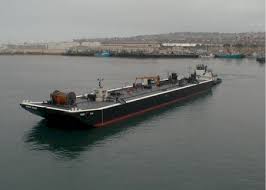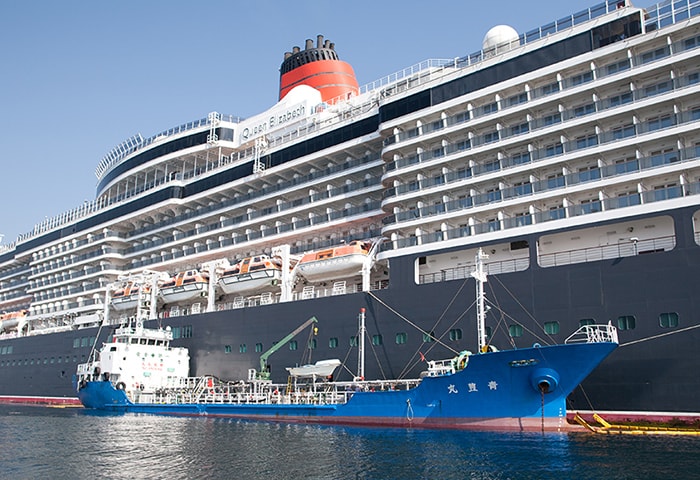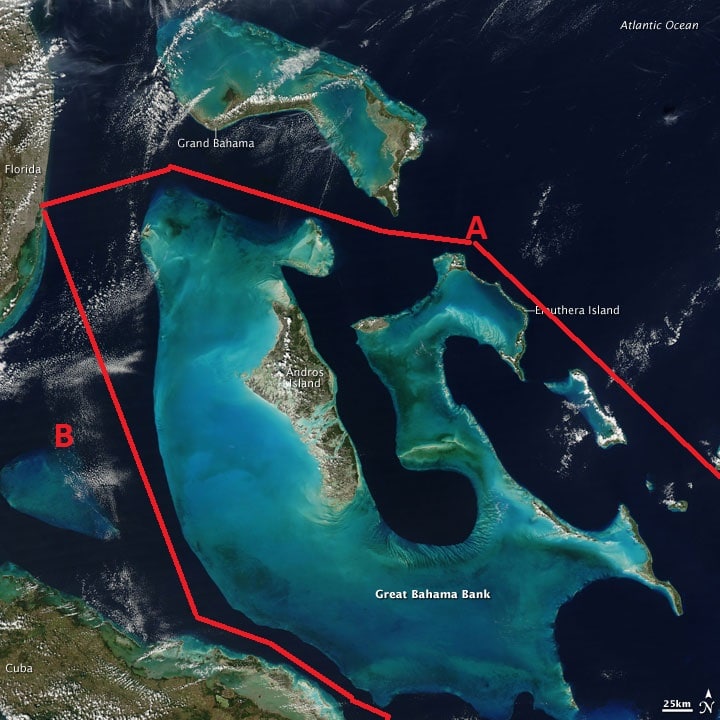Today we are at sea and cover the distance between Ft. Lauderdale and Amber Cove in the Dominican Republic. As explained last time, we have two ways of getting there, either sailing north of the Grand Bahama Bank or to the south of the Bank. What we do depends on the weather. If the weather looks good then we go north as that is the shortest distance and if the weather is not so good (heavy swells and wind rolling in from the North Atlantic) then we go south. The Southern route protects the ship and the guests on board from the North Atlantic Ocean until about midnight of the sea day. And in that way we do not spoil the first day of the cruise which is one of the only 7 days of this cruise and for quite a few guests the only vacation of the year.
But at the moment the weather is very nice and thus we went around the north, which saves fuel and in the long term also saves on the ticket price, because “the petrol” has to be paid for one way or the other. That money that we save might not be that much but if 14 HAL ships try to do that every day, then it soon mounts up and that works itself through in the prices for the cruises.
The major cost that makes up a cruise ticket price is fuel and labor. Fuel we try to get a cheap as possible by buying in bulk and that saves considerably. Imagine Carnival Corp buying fuel for one ship or for 120 ships, somewhere there will be somebody who will give a good discount to all the 120 ships. The purchase sequence is quite complicated and we do not phone Aruba and say, do you have some cheap fuel left? The fuel they have there is for sale on the international Market and Carnival Corp will buy some for a negotiated or contract price and then a company in Aruba will deliver. Same in Florida, same in Vancouver, same nearly everywhere else. The last time I remember that we dealt with local oil sellers was in St. Petersburg a number of years ago but there things happened in a different way anyway.

A bunker barge pushed by a tug boat. The round contraption on the bow is the oil boom which is laid around the ship and barge to prevent oil to get into the harbor if there was a spill.
Once it comes to loading the fuel, the procedure varies from port to port. Port Everglades has an extensive pipe system running through the port and the oil is pumped directly from a holding tank to the ship. If you are the only ship loading fuel, then they can do this with speeds up to 400 tons per hour. (1 ton is a 1000 cub. Feet) If more ships are hooked up, then speed can go down considerably. Therefore none of the engineers really likes bunkering in Port Everglades on a busy port day. In ports such as Willemstad they also have manifolds at the dock bringing fuel directly from the holding tank. In many other ports, there is a bunker barge coming alongside. Sometimes it is a real barge, put in place with a tugboat. This is standard practice in most American and Canadian ports. But in some other parts of the world, a complete ship, small coaster, comes alongside to deliver the fuel. That gives for the officers on our bridge the strange phenomena to look straight down into the bridge of another ship and see a colleague doing the same work as they are doing.

This is a example of a bunker-boat. A self propelled oil delivery system as seen here in a far eastern port. The ship is the Queen Elizabeth of Cunard which is a near sister to the Vista Class of Holland America and thus also similar to the Eurodam.
The fuel is always ordered by the Chief Engineer and on regular loop cruises as the Eurodam is doing it means we load fuel every 14 days. On longer cruises the Chief Engineer makes a calculation of what he needs and will order for a certain port. Normally that is approved but sometimes he gets the request to load the minimum possible for one port and then a bit more in the next port if there is a lot of difference in the fuel price. If that can be done safely for the stability of the ship (Fuel provides part of the weight in the bottom of the ship so we do not tip over) then that will be done. Therefore the Chief engineer will always have his fuel calculations verified by the 2nd. Officer in charge of stability to see if it is safely possible.
Tomorrow we are at Amber Cove, arriving around 07.00 hrs. at the pilot station and then docked before 08.00 hrs. The weather calls for another sunny and warm day with 84oF or 29oC. We have this cruise a large number of children on board and I think that they really are going to enjoy the resort.


April 3, 2018 at 4:55 am
Dear Captain,
Highly appreciate this kind of articles. It is not the usual stuff about “idyllic ports” (which have disappeared anyhow in many cases, changing for container parks rather than palmtree parks). Many of us, regular cruise passengers, and some of us, interested enthusiasts about passenger ships, are anxious to learn a bit more from “behind the scene”.
Thank you !
Werner.
April 3, 2018 at 7:33 pm
Captain, I have a technical question:
You say that on regular cruises you fuel up for 14 days. Assuming you are doing 7 day cruises out of south Florida, that must be a convenience issue. Not sure how much the ship’s draft is increased by fuel for another (future) cruise but I assume it is measurable, and therefore the increased hydro-dynamic drag is measurable. So you pay a (fuel) cost for driving the ship through the sea with fuel on board intended for the next cruise. Anybody ever put a price tag on that. I’m sure you have……
As always forever looking forward to your informative Blogs……..Ruud
April 4, 2018 at 12:34 pm
Yes, your are correct, bunkering every 14 days, is convenience but also cost wise as connecting up and delivery costs extra money. For the extra costs of having it on board it is not that much as we always sail with the same draft, to keep the ships stability the same. Thus when the fuel goes out, ballast tanks are filled up to compensate for the loss of fuel – weight. And so the total weight pushed around remains the same. They only time when our draft really increases is when we fill up completely for a long voyage such as a crossing or a trans canal when we might have to load for a three week period. Then there will be a bit more drag and more fuel consumption to push that greater weight through the water. But that is then off set again by not topping up our bunkers in a more expensive port. So all in all I do not think it makes much of a difference and I have never heard about our bean counters having had a look at it.
Best regards
Capt. Albert